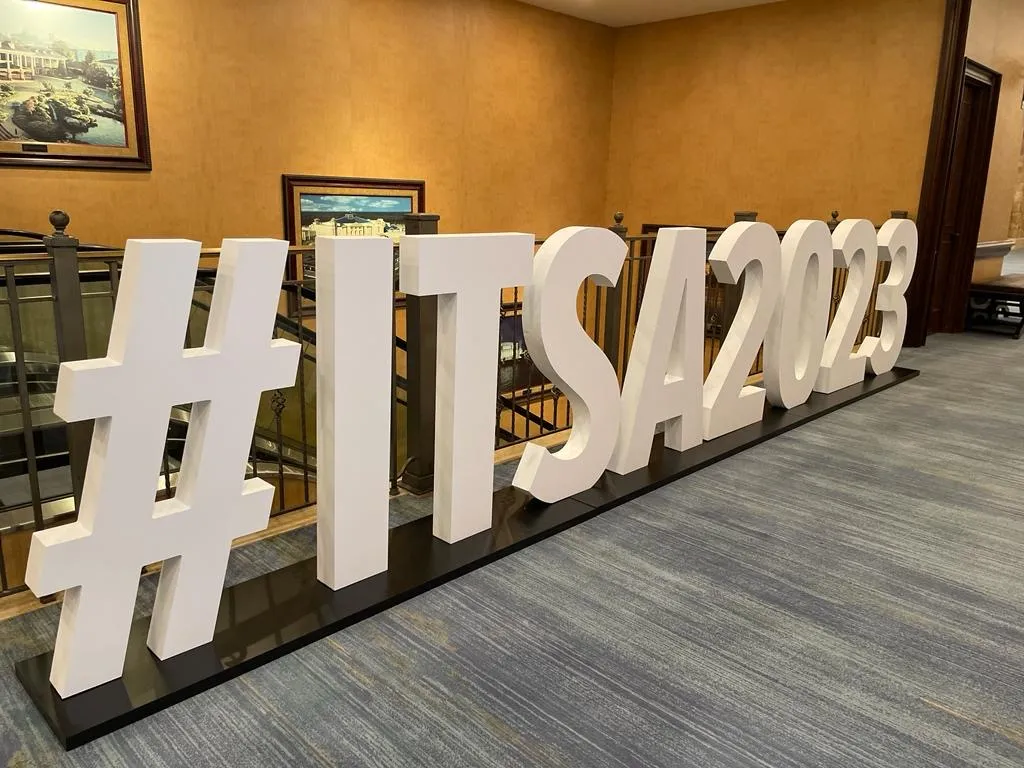Opened in November 2012, Toyota’s intelligent transportation systems (ITS) proving ground is being used to run a number of interactive tests between specially-equipped Toyota vehicles. Located at the company's Higashi-Fuji Technical Centre in Susono City, Japan, the ITS proving ground is a 3.5-hectare site that faithfully replicates a real urban environment, complete with intersecting streets, pedestrian crosswalks, and traffic signals. It is equipped with optical beacons, government-allocated 760 MHz trans
February 25, 2013
Read time: 3 mins
Opened in November 2012, 1686 Toyota’s intelligent transportation systems (ITS) proving ground is being used to run a number of interactive tests between specially-equipped Toyota vehicles.
Located at the company's Higashi-Fuji Technical Centre in Susono City, Japan, the ITS proving ground is a 3.5-hectare site that faithfully replicates a real urban environment, complete with intersecting streets, pedestrian crosswalks, and traffic signals. It is equipped with optical beacons, government-allocated 760 MHz transmitters to link the various ITS detection and communication systems, vehicle detection sensors and pedestrian detection sensors.
"The ITS Proving Ground will be used to expedite the development of infrastructure-cooperative safe driving support systems with the aim of reducing traffic accidents at intersections and accidents involving pedestrians," said Seigo Kuzumaki, secretary of chief safety technology officer and project general manager, Toyota Motor Corporation. "The road environment can easily be changed according to the system being developed, such as installing obstructing walls to create blind corners."
Researchers are using the site to evaluate driving methods and other safety elements that are difficult to perform on public roads, Mr Kuzumaki added. "On public roads, we will mainly test the effectiveness and the user acceptance of systems."
The cars include features such as two-way radio communications, voice-based warning systems and dashboard LCD displays that can show the status of nearby traffic lights and indicate the positions of oncoming vehicles that may be obstructed from view.
Meanwhile, the stop lights, pedestrian crossings and other traffic sensors are connected to their own two-way transmitters. The idea is that an ITS-equipped vehicle can query nearby traffic control systems via radio about approaching vehicles and pedestrians, as well as the status of stop lights, and inform those systems of the ITS car's position in real time.
"Initially, we are working on systems that use pedestrian detection sensors installed on the road to detect pedestrians and to warn cars about their presence," said Mr. Kuzumaki. "We are currently investigating pedestrian-to-vehicle communications, which includes analysis of accidents involving pedestrians."
The ITS proving ground reflects Toyota's corporate goal to achieve "zero casualties from traffic accidents." In pursuit of this goal, the company launched its real-world safety initiative in 2006. This is an all-encompassing program that, by studying the interaction of people, vehicles and the driving environment, aims to make driving safer for everyone on the road - whether they are driving a car, truck or bike, or are on foot.
As part of the real-world safety program, Toyota is developing new technologies and researching accidents through actual incidents and simulations. The company's integrated safety management concept (ISMC) overarches this research and development effort. ISMC covers every aspect of driving from parking and active safety procedures during driving, to pre-collision damage mitigation, passive safety measures to protect the passengers such as seatbelts and airbags, and contacting emergency services for help.
"At this time, we are developing the evaluation facilities based on the way roads are put together in Japan," said Mr Kuzumaki. "The road and communications environments in other countries are different, so further development of the facilities would be necessary. If such facilities were prepared, it would be possible to conduct tests of overseas infrastructure cooperative systems."
The lessons learned at the ITS proving ground may eventually find their way into cars and trucks driven by Canadians and people all over the world. "Safety is Toyota's highest priority," said Mr Kuzumaki.
Located at the company's Higashi-Fuji Technical Centre in Susono City, Japan, the ITS proving ground is a 3.5-hectare site that faithfully replicates a real urban environment, complete with intersecting streets, pedestrian crosswalks, and traffic signals. It is equipped with optical beacons, government-allocated 760 MHz transmitters to link the various ITS detection and communication systems, vehicle detection sensors and pedestrian detection sensors.
"The ITS Proving Ground will be used to expedite the development of infrastructure-cooperative safe driving support systems with the aim of reducing traffic accidents at intersections and accidents involving pedestrians," said Seigo Kuzumaki, secretary of chief safety technology officer and project general manager, Toyota Motor Corporation. "The road environment can easily be changed according to the system being developed, such as installing obstructing walls to create blind corners."
Researchers are using the site to evaluate driving methods and other safety elements that are difficult to perform on public roads, Mr Kuzumaki added. "On public roads, we will mainly test the effectiveness and the user acceptance of systems."
The cars include features such as two-way radio communications, voice-based warning systems and dashboard LCD displays that can show the status of nearby traffic lights and indicate the positions of oncoming vehicles that may be obstructed from view.
Meanwhile, the stop lights, pedestrian crossings and other traffic sensors are connected to their own two-way transmitters. The idea is that an ITS-equipped vehicle can query nearby traffic control systems via radio about approaching vehicles and pedestrians, as well as the status of stop lights, and inform those systems of the ITS car's position in real time.
"Initially, we are working on systems that use pedestrian detection sensors installed on the road to detect pedestrians and to warn cars about their presence," said Mr. Kuzumaki. "We are currently investigating pedestrian-to-vehicle communications, which includes analysis of accidents involving pedestrians."
The ITS proving ground reflects Toyota's corporate goal to achieve "zero casualties from traffic accidents." In pursuit of this goal, the company launched its real-world safety initiative in 2006. This is an all-encompassing program that, by studying the interaction of people, vehicles and the driving environment, aims to make driving safer for everyone on the road - whether they are driving a car, truck or bike, or are on foot.
As part of the real-world safety program, Toyota is developing new technologies and researching accidents through actual incidents and simulations. The company's integrated safety management concept (ISMC) overarches this research and development effort. ISMC covers every aspect of driving from parking and active safety procedures during driving, to pre-collision damage mitigation, passive safety measures to protect the passengers such as seatbelts and airbags, and contacting emergency services for help.
"At this time, we are developing the evaluation facilities based on the way roads are put together in Japan," said Mr Kuzumaki. "The road and communications environments in other countries are different, so further development of the facilities would be necessary. If such facilities were prepared, it would be possible to conduct tests of overseas infrastructure cooperative systems."
The lessons learned at the ITS proving ground may eventually find their way into cars and trucks driven by Canadians and people all over the world. "Safety is Toyota's highest priority," said Mr Kuzumaki.









